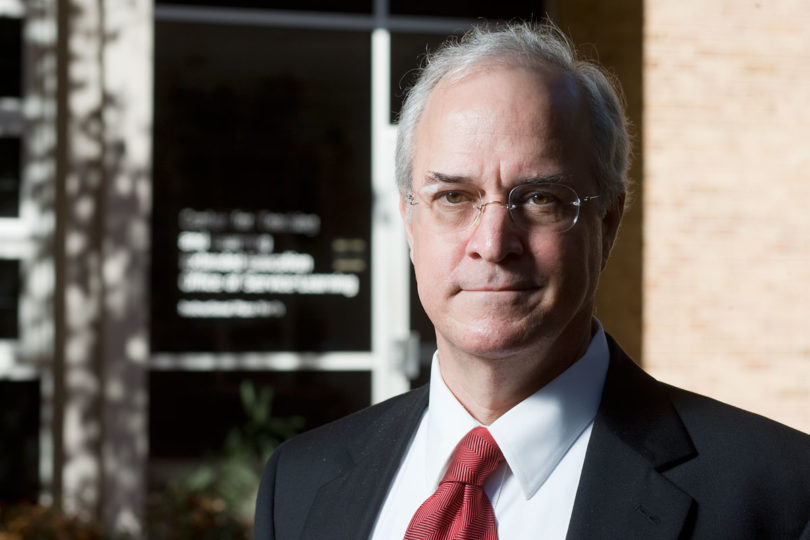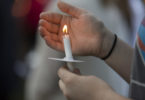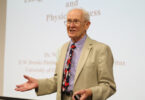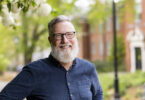The Center for Teaching and Learning invites the university community to celebrate its 30th anniversary at a drop-in reception at 4 p.m. Nov. 19 at the center’s north conference room.
Attendees will receive a copy of Robert Leamnson’s Thinking About Teaching and Learning, which offers practical advice on how to help first-year students develop good learning habits. A companion work by Leamnson, Learning (Your First Job), was distributed to UGA incoming freshmen this fall.
Serving as a catalyst for discussions about teaching and learning is a prime focus of the center, which was founded in 1979 as the Office of Instructional Development. In 1994, it merged with the Instructional Resource Center to become the Office of Instructional Support and Development. A dozen years later, it became the Center for Teaching and Learning.
“The center’s overarching goal is to prepare and help faculty to think more profoundly about student learning and implement that understanding—not by some single-method quick fix, but with the disseminating of new ideas about teaching, learning and cognition,” said Nelson Hilton, a professor of English who was appointed director of CTL in 2006.
Professional development
The center—a unit that reports to the vice president for instruction—arranges workshops, a Maymester Institute and individual consultations to assist in the professional development of faculty and teaching assistants.
Additional responsibilities include the support of physical and virtual classrooms, video and multimedia design and production, programming for university channel 15 and loan of instructional material and equipment.
“CTL services have been especially helpful in my rethinking of how I teach,” said Farley Richmond, a professor in the department of film and theatre studies, whose Web site includes a blog. “For those of us who have been teaching for many years, it is refreshing to have colleagues dedicate themselves to helping the faculty to retool for the future.”
Faculty Learning Communities
The success and impact of the Lilly Fellows program, now in its 27th year, and the slightly newer Senior Teaching Fellows program, led the center to develop themed Faculty Learning Communities, seven of which are currently under way in the program’s third year.
“FLCs are a wonderful way to connect to faculty across the university, to broaden your circle of colleagues and to enjoy conversations with people who are as dedicated to the academy as you are,” said classics professor Naomi Norman. “They are also just plain fun.”
CTL also sponsors the Writing Fellows, the Writing Certificate, the new faculty colloquium and a peer consultation team.
TA support has long been central to the center’s mission, and includes TA orientation, more than 20 GRSC classes, support of the Graduate School teaching portfolio program and two separate award programs. Its highly regarded Future Faculty Program offers “the best preparation possible” for future academic careers, said Patricia Curtin, already a chaired professor at the University of Oregon just 10 years after leaving the program.
“It’s putting UGA grads in influential positions throughout academia,” she said.
A more recent alum, Kevin Williams, now an assistant professor at Mississippi State, calls the program “the best I was involved with as a teaching assistant.”
On the technical end, the center is responsible for troubleshooting and supporting classroom technology in 520 general purpose classrooms, and fully maintains more than 100. To handle this, an on-site technician from the center’s staff is assigned to each of four campus zones: north, central, Miller Learning Center and south. Among other duties, the technicians program the panel controls unique to each classroom.
Online training environments
Another CTL hallmark for more than a decade has been offering individual and group training in the effective use of online environments, which now includes Wimba Classroom synchronous interaction. The “electronic Learning Commons” that is replacing WebCT and its 13,000+ courses provides a virtual space to complement every course offering on and off campus.
For Jim Porter, Meigs Professor and associate dean of the Odum School of Ecology, CTL’s video and multimedia staff represent “a gold mine of talent here on campus who know how and when to use different media to enhance learning. My students and I have benefitted from their expertise for years.”
The Center for Teaching and Learning is located on the lower plaza between the psychology and journalism buildings.







